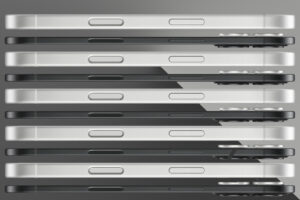Final Cut Pro X update streamlines remote workflows, more — Apple World Today
[ad_1]
![]()
There are a series of new workflow improvements in Final Cut Pro. ProRes RAW camera settings, such as ISO, color temperature, and exposure offset are exposed in the inspector for the first time. Editors can also apply audio crossfades on adjacent clips in one simple step, use a new context menu to close a project or clear timeline history, and sort clips and projects in List View according to the last date each file was modified.
This release also introduces performance improvements with new Metal-enabled plug-ins for RED RAW and Canon Cinema RAW Light. Transcoding 8K RED RAW video to ProRes 422 is purportedly up to two times faster on a Mac Pro, and up to three times faster on a MacBook Pro. And for the first time, Final Cut Pro editors can play and edit 8K Canon Cinema RAW Light.
When working with 360-degree video, editors can stabilize stereoscopic 3D video and view footage in the 360-degree Viewer with separate streams for each eye. They can also start working immediately with remote content while it’s downloading in the background from web-based asset management applications, such as the Frame.io workflow extension.
Apple has also updated its Motion and Compressor tools. Motion now offers professionals a new range of possibilities for creating effects and graphics. Creators can import third-party 3D models or choose from a built-in library of 3D models in the USDZ format for use in titles, generators, effects, and transitions. They can even use behaviors or keyframes to manipulate the position, rotation, and scale of a model, and take advantage of existing replicators, emitters, lights, and cameras for further creativity.
Also included in today’s Motion update is the new Stroke Filter, a tool that automatically outlines an object or text element using its alpha channel. Editors can customize outlines by animating their offset, applying multiple stroke filters to the same object, or using the gradient tools to create multiple strokes with different colors. This enables motion graphics artists to create dazzling animations and effects while avoiding the work of outlining elements by hand
[ad_2]
Source link




